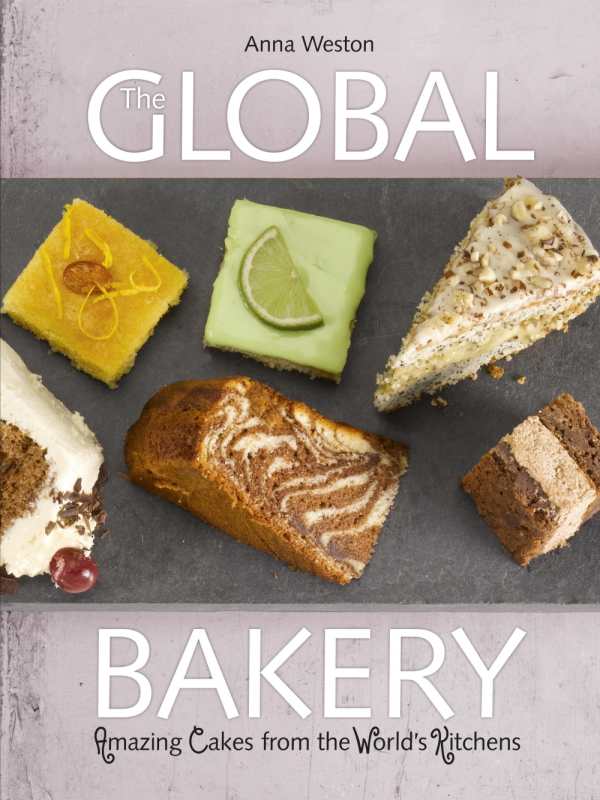The Global Bakery
Amazing Cakes from the World's Kitchens
Practical yet still exceedingly delicious, this world tour of cakes offers down-to-earth instructions for the everyday chef.
For the home baker in search of a wider repertoire, Anna Weston presents a delectable sampler in The Global Bakery. Sixty-four recipes feature cakes that serve as perfect family desserts, potluck pleasers, and hostess gifts. Few are showcase concoctions with delicate piping. Here, adventure arrives not through elaborate technique, but through whole ingredients and flavors from all over the world. Warm, clear, and free of intimidating steps, this is a welcome tour.
The Global Bakery gathers recipes by region, favoring a down-to-earth approach. With little exception, they use basic pans and optional icings, require minimal prep, and are mostly one layer. Rather than including extensive notes on the history behind each cake, Weston provides brief comments that reveal a few background details, as well as tips learned through her own trials. The recipes smartly range from simple tea accompaniments (Bara Brith) to sugar-laden fare (Pastel de Tres Leches), from dense cakes (Castagnaccio) to feather-light treats (Guava Chiffon Cake). Cookbook extras—such as explanations on the science of baking, tables of weights and measures, pantry lists, and online resources for lesser-known items—remain absent, allowing the focus to remain on taste.
Numerous recipes feature apples, bananas, and honey, providing a fascinating glimpse at worldwide interpretations of similar ingredients. Sweet potato, mango, spices, and persimmons inspire bakers to reach beyond typical vanilla/chocolate fare. Chocolate cake recipes that do appear—such as Opera Cake from Cuba and Black Forest Gâteau from Germany—provide a touch of decadence amid the everyday selections. Especially intriguing recipes reveal a fusion of cultures, including a Portuguese-inspired Japanese cake, Kasutera, and an Argentinian Welsh cake, Torta Negra Galesa. Though selections from Europe predominate, those from the Middle East deserve a closer look for their bright citrus notes.
These aren’t cakes that are pretty to look at yet troublesome to try—they inspire real kitchen activity. Weston’s practical encouragement comes across as genuine; in one instance, she advises to simply “use the base as the top and your secret will be safe” if a ginger cake sinks while cooling. She also candidly notes which recipes were met with enthusiasm by taste testers, and which were better suited to particular palates. The collection is ample without overwhelming—a keeper, whether dessert is served once in a blue moon or as a daily highlight.
Reviewed by
Karen Rigby
Disclosure: This article is not an endorsement, but a review. The publisher of this book provided free copies of the book to have their book reviewed by a professional reviewer. No fee was paid by the publisher for this review. Foreword Reviews only recommends books that we love. Foreword Magazine, Inc. is disclosing this in accordance with the Federal Trade Commission’s 16 CFR, Part 255.

